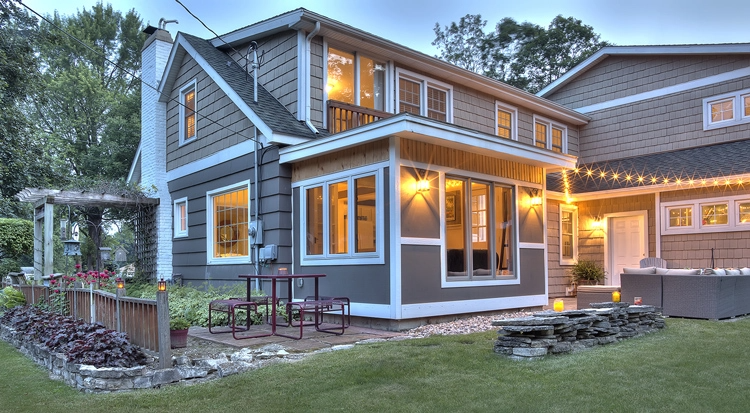Tips from All Seasons Roofing & Siding for Choosing the Right Siding Material for Your Home
Choosing the right siding material for your home is a critical decision that affects everything from curb appeal to energy efficiency and long-term durability. Homeowners often find themselves overwhelmed by the number of choices, each offering unique strengths, appearances, and maintenance requirements. Making an informed decision means balancing aesthetics, weather resistance, budget, and upkeep over the years. The right choice can reduce repair costs, improve insulation, and transform the visual profile of your house. We will explore key factors and practical insights to help you evaluate siding options with clarity and confidence, drawing from practical knowledge and homeowner needs.
Understanding Climate, Architecture, and Lifestyle Requirements
Before selecting a siding material, it’s crucial to understand how your regional climate and architectural style influence your choices. For instance, in Medway, MA, where seasonal changes can be dramatic, with cold, snowy winters and warm, sunny summers, homeowners need siding that can handle moisture and temperature fluctuations. Homes in such areas benefit from vinyl and fiber cement, which resist fading, warping, and moisture damage, making them practical for humid or sun-intense conditions. On the other hand, wood siding might work beautifully in drier regions but could lead to rot and warping if exposed to prolonged dampness without consistent upkeep. Your home’s design also plays a significant role.
Colonial-style homes often pair well with traditional horizontal lap siding, while modern architecture may benefit from metal panels or composite materials. Beyond weather and design, consider your lifestyle. If you prefer low-maintenance living, choose siding requiring minimal care rather than one requiring frequent painting or sealing. Evaluate how much time and money you will invest in upkeep each year. This assessment aligns your siding choice with your everyday routines and ensures that your decision supports long-term comfort and value. All Seasons Roofing & Siding understands the diverse needs of homeowners and encourages this first step as a foundation for making the right choice.
Comparing Material Durability and Maintenance Expectations
The next factor to consider when choosing siding material is how long it will last and how much attention it needs. Vinyl siding is popular because it’s affordable, weather-resistant, and doesn’t require painting. However, it can crack under impact and fade gradually depending on the color and manufacturer. Fiber cement is another durable option that mimics the appearance of wood but offers enhanced resistance to fire, insects, and rot.
It’s heavier and usually more expensive to install, but the payoff in durability can make it worthwhile for many homeowners. Wood siding provides classic beauty and natural appeal, but is one of the more demanding materials in maintenance. You’ll need to repaint or reseal it every few years to prevent moisture damage or decay. Brick and stone veneer offer exceptional strength and require very little maintenance, though the installation costs are significantly higher. For homeowners interested in a balance of strength and visual variety, engineered wood or composite siding may offer the ideal middle ground.
These materials come pre-treated to resist moisture and pests and are available in various textures and colors. When evaluating siding options, compare the upfront cost and ongoing responsibilities. A low-cost material that requires constant attention may cost more in the long run than a higher-priced one that needs little upkeep. Choosing a material that aligns with your lifestyle ensures performance and peace of mind for years.
Considering Energy Efficiency and Environmental Impact
Siding doesn’t just affect your home’s exterior look—it also plays a significant role in energy performance. Insulated siding, such as insulated vinyl or foam-backed panels, helps reduce heat loss during the winter and keeps cool air in during the summer. This can lead to reduced energy bills and a more comfortable living environment throughout the year. When comparing siding options, consider the R-value, which measures thermal resistance. Higher R-values mean better insulation. While not typically insulated, fiber cement can be paired with external insulation layers during installation to enhance its energy performance.
Similarly, metal siding reflects sunlight, helping homes in hot climates remain cooler. Beyond energy efficiency, sustainability is another growing concern for many homeowners. Recycled materials are now being used to manufacture certain vinyl, composite, and fiber cement siding types. These options reduce landfill waste and often come from eco-conscious production methods. When sourced from responsibly managed forests, wood siding can be a renewable choice, though its environmental impact depends on maintenance products and longevity.
Understanding the long-term environmental and financial benefits of energy-efficient siding can inform smarter choices and ensure your home supports your utility goals and values. All Seasons Roofing & Siding often recommends balancing performance with sustainability, making it easier for homeowners to make choices that benefit their homes and the environment.
Selecting the right siding material is a decision that blends practicality, durability, visual impact, and lifestyle preferences. By considering your climate, home design, maintenance capacity, energy efficiency goals, and aesthetic vision, you can narrow your options and find a siding solution that fits your home inside and out. Whether you’re looking for long-term durability, energy cost savings, or a modern update to your home’s exterior, thoughtful planning ensures that your siding supports your daily life while adding long-term value. With guidance like that provided by All Seasons Roofing & Siding, homeowners can confidently make choices that enhance comfort, performance, and beauty.
READ MORE : Can Urban Yards Survive the New Era of Weather Extremes?

